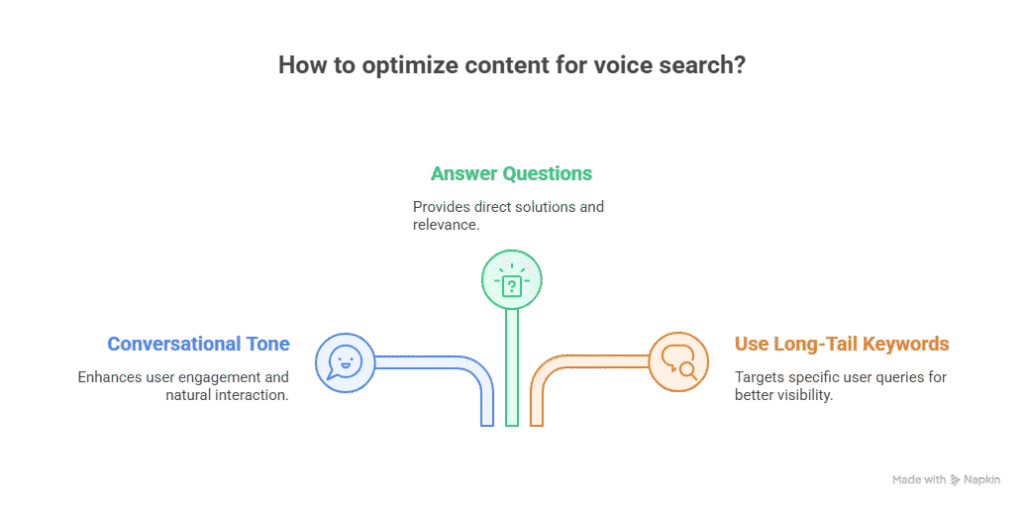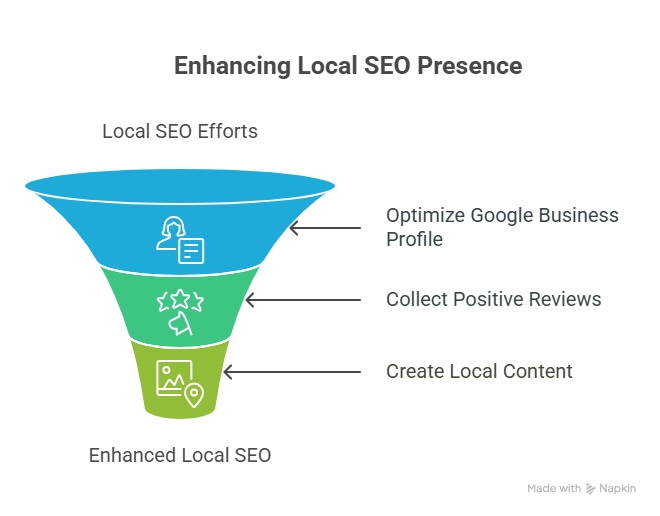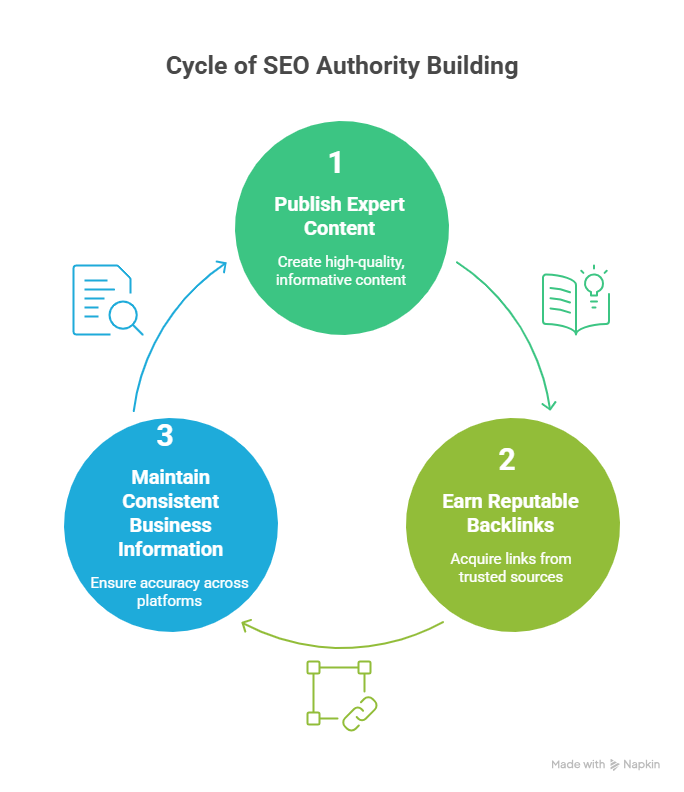
Voice search has changed how people explore the internet. In 2025, smart devices, virtual assistants, and AI shape the future of search. Marketers who ignore voice search optimization lose visibility, traffic, and authority. This guide shows proven strategies to master voice search optimization in 2025, boost online presence, and earn trust with your audience.
What Makes Voice Search Different From Text Search?
Voice search transforms search behavior. Users speak naturally instead of typing short phrases. They ask full questions and expect precise answers.
For example:
- Text search: “best pizza Mumbai”
- Voice search: “Where can I find the best pizza restaurant near me?”
Voice search queries:
- Contain longer phrases
- Sound conversational
- Focus on local results
- Demand quick, relevant answers
If you adjust your SEO only for short keywords, you miss voice traffic. Brands must understand how voice search influences user intent and content strategy.
Why Voice Search Optimization Matters in 2025
Smart speakers, voice assistants, and IoT devices continue to grow. Consumers rely on them to shop, discover services, and get instant answers.
Voice search optimization:
- Drives qualified traffic
- Builds brand authority
- Boosts user engagement
- Improves mobile SEO
- Increases conversions
Businesses that invest in voice search strategies secure top positions in featured snippets, answer boxes, and “near me” searches.
Key Voice Search Optimization Trends in 2025
Staying ahead requires understanding emerging trends. Here are the major shifts shaping 2025:
Conversational AI Takes Center Stage
AI voice assistants handle complex queries, maintain context, and deliver personalized recommendations. Your content must feel human and natural to match these interactions.
Local Voice Search Dominates
Local businesses receive more voice searches. “Near me” and “open now” queries increase as consumers seek instant solutions.
Multimodal Search Grows
Voice search combines with visual and text search. Users ask questions, scan QR codes, or upload images to get results. Your strategy must cover these blended search behaviors.
Zero-Click Results Expand
Search engines show answers directly on result pages. Voice search often reads these snippets aloud. Ranking in zero-click results drives authority.
How to Craft Voice-Friendly Content
Use Natural Language and Conversational Tone
Write the way people speak. Avoid jargon and short, robotic phrases. For example:
Instead of: “Optimal hydration for athletes.”
Write: “How much water should an athlete drink every day?”
When content matches conversational queries, voice assistants favor your answers.
Answer Specific Questions
Voice search thrives on clear answers. Structure content to address questions like:
- What?
- Who?
- When?
- Where?
- Why?
- How?
Optimize for Featured Snippets
Featured snippets often power voice responses. To capture them:
- Write clear definitions and explanations.
- Use bullet points or numbered lists.
- Structure paragraphs under 50 words.
Include target keywords in headers and first sentences.
Keyword Research for Voice Search Optimization
Long-Tail Keywords
Voice searches use longer phrases. For example:
- “How do I install a smart thermostat?”
- “What is the best coffee machine for home use?”
Include these long-tail keywords in your titles, headings, and meta descriptions.
Question-Based Keywords
People often ask direct questions. Tools like AnswerThePublic and SEMrush help you discover questions users ask in your niche. Integrate them naturally into your content.
Local Intent Keywords
Local searches grow rapidly. Include phrases such as:
- “Near me”
- “In [city]”
- “Closest”
- “Nearby”
Make sure your Google Business Profile stays updated with accurate location details.
Technical SEO Strategies for Voice Search in 2025
Technical SEO helps search engines crawl and index your website accurately. Follow these steps:
Improve Website Speed
Voice searches expect quick answers. Google rewards fast-loading pages. Compress images, use a reliable hosting provider, and enable caching.
Use Schema Markup
Schema markup (structured data) signals what your content means. Use it to highlight:
- FAQs
- Reviews
- Products
- Business details
Schema increases the chance your site appears in rich results and voice answers.
Optimize for Mobile Devices
Voice searches often happen on smartphones. Use responsive design so your website looks great on any screen. Keep navigation simple and buttons easy to tap.
Building Trust and Authority for Voice Search Rankings
Publish Authoritative Content
Create content backed by research and credible sources. Include references and cite experts in your field.
Earn Backlinks from Reputable Websites
Secure backlinks from trusted industry sites, media outlets, and partners. High-quality backlinks improve your authority and increase the chance of ranking in voice results.
Keep Your Information Consistent
Ensure your business name, address, and phone number remain identical across all platforms. Inconsistent details confuse search engines and hurt local rankings.
Local Voice Search Optimization Tactics
Local SEO drives most voice searches. Use these methods to attract customers in your area:
Claim and Optimize Google Business Profile
Verify your listing. Add:
- Business description
- Hours of operation
- Photos
- Reviews
Update your profile whenever details change.
Collect and Respond to Reviews
Positive reviews build trust. Encourage satisfied customers to share feedback. Always reply to reviews—both positive and negative—to show engagement.
Create Localized Content
Write blog posts and landing pages about local events, news, and community initiatives. This strategy increases your relevance for regional queries.
Voice Search Analytics and Measurement
Use Google Search Console
Monitor search queries that drive traffic to your site. Identify high-performing keywords and optimize pages further.
Analyze User Behavior
Use tools like Google Analytics to track:
- Time on page
- Bounce rates
- Click-through rates
Insights help you improve content and user experience.
Test Voice Queries Regularly
Test how your website performs on different devices. Use smart speakers, voice assistants, and smartphones to check which answers appear.
Common Mistakes in Voice Search Optimization
Overloading Content with Keywords
Keyword stuffing makes content awkward. Focus on natural language and readability.
Ignoring Local Search Elements
Skipping local optimization loses valuable traffic. Prioritize local keywords and listings.
Neglecting Mobile Optimization
Most voice searches happen on mobile. If your site doesn’t work well on smartphones, users leave quickly.
Future of Voice Search Beyond 2025
Voice Commerce Grows
More consumers buy products through voice commands. Optimizing product listings for voice search creates new revenue streams.
Integration with Smart Home Devices
IoT and voice search blend seamlessly. Brands that build voice-friendly experiences across devices lead the market.
Hyper-Personalization
AI delivers personalized search results based on preferences, past behavior, and context. Tailored content earns higher engagement.
Voice Search Optimization Checklist
Content
- Write in a conversational tone.
- Answer specific questions.
- Use long-tail and question-based keywords.

Technical SEO
- Speed up your website.
- Use schema markup.
- Ensure mobile responsiveness.

Local SEO
- Optimize Google Business Profile.
- Collect positive reviews.
- Create local content.

Authority
- Publish expert content.
- Earn reputable backlinks.
- Maintain consistent business information.

Analytics
- Track search queries.
- Analyze user behavior.
- Test voice queries frequently.

Conclusion
Voice search is no longer an optional strategy. It has become essential for businesses that want to connect with their audience in the fastest, most natural way possible. As users shift toward speaking their queries, your content must adapt.
Brands that invest in voice search optimization gain more visibility, build deeper trust, and strengthen their authority online. Use the strategies in this guide to stay ahead, create seamless experiences, and drive sustainable growth through voice search in 2025.
Frequently Asked Questions
1. What is voice search optimization?
Voice search optimization makes your content easier for smart assistants to find and read aloud in response to spoken queries.
2. Why does voice search matter in 2025?
Voice search drives more traffic from mobile and smart devices, making it essential for modern SEO strategies.
3. How do people use voice search?
People ask questions in a natural tone using smartphones, smart speakers, or voice-enabled devices.
4. What keywords work best for voice search?
Long-tail, conversational, and question-based keywords perform best in voice search results.
5. How can I make my content voice-search friendly?
Use simple language, answer questions clearly, and format with headers and bullet points.
6. Do I need a mobile-friendly website for voice SEO?
Yes, mobile optimization improves speed, usability, and performance for voice search users.
7. What tools help with voice search optimization?
Use tools like SEMrush, AnswerThePublic, and Google Search Console to find voice keywords and track results.
8. Does voice search affect local SEO?
Yes, most voice searches are local. Optimize your Google Business Profile and use location-based keywords.
9. What is a featured snippet in voice search?
A featured snippet is a highlighted answer from your site that voice assistants often read aloud.
10. How do I rank higher in voice search results?
Focus on conversational content, fast load speed, structured data, and authority-building backlinks.
Read More » The Ultimate Guide to SEO Service Trends in 2025